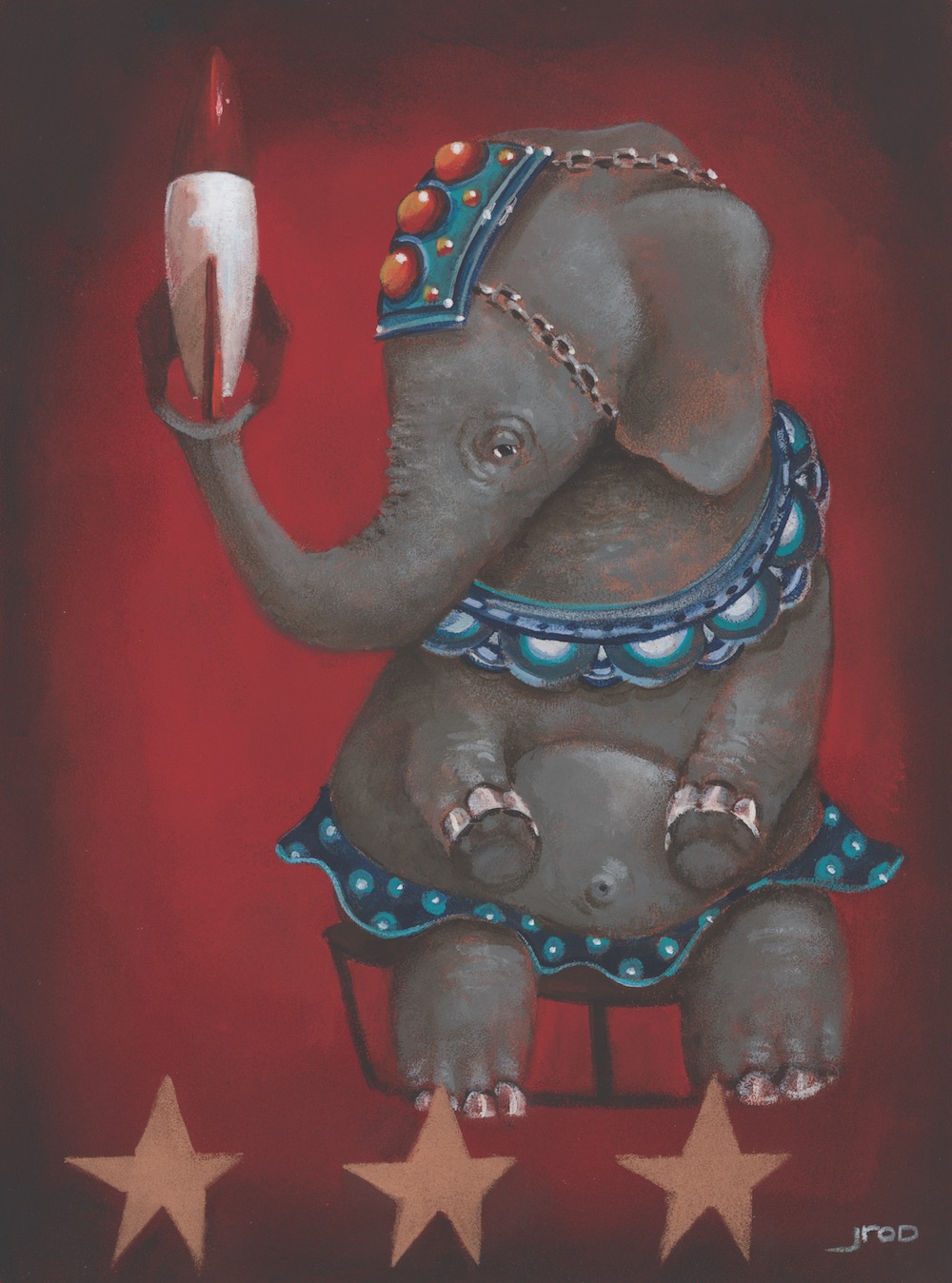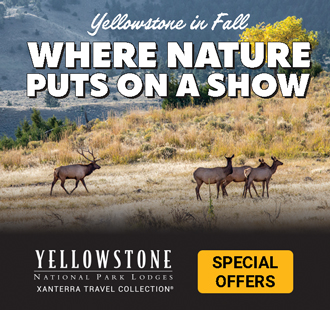EBS STAFF
BOZEMAN – Jarrod Eastman is excited to listen to the new Tool album, letting the stylings of the Los Angeles-based, post-metal rock and roll band waft over him as he puts bristle to canvas, chisel and letter stamps to epoxy clay sculptures.
Tool’s sounds embody the skateboard, heavy metal, tattoo and “explosive pop culture” that shaped Eastman, 47, growing up in Phoenix, Arizona, in the 1970s and ’80s, who’s hands now shape a unique brand of art that straddles some funky line etched between the likes of Salvador Dali and Joe Sorren, with a twist of Ralph Steadman for the erratic, seemingly disobedient type of “weird” that Hunter S. Thompson fostered affinity for.
If one had to neatly package Eastman’s style, it would be dubbed “pop surrealism,” aka “lowbrow,” a family of visual art that came to fruition in the late ’70s in Los Angeles.
A note to remember: “lowbrow” is defined as “not highly intellectual or cultured.”
Eastman works from his Bozeman home, just north of Montana State University, where he has lived with his wife for the past 17 years. The couple moved from Colorado Springs, realizing Bozeman was a unique town situated at a special coordinate in the American Rockies.
“We went to Main Street on this beautiful July day, and it was so quiet, there was nobody downtown,” Eastman said. “It was this empty, cute little town.” After climbing to the top of Hyalite Peak, they affirmed there were enough mountains to satisfy their yearnings.
Today, Bozeman’s Main Street is a far cry from those days of old. Back then, according to Eastman, the town’s art offerings were slim, and his alternative creations, along with a select grouping of other artists and their work, put him at center stage. At a minimum, they caught people’s attention.
“It’s definitely not conservative artwork, and definitely doesn’t appeal to everybody,” Eastman said. “When I was younger, my stuff was definitely edgier, people would look at it and say, ‘Wow, you’re an amazing artist, but could you do something that makes me feel good?’”
Now, with the perspective and grace that comes with experience, Eastman makes a conscious effort to try and make people objectively happy with his work. For example, take “Heavyweight,” a sculpture of a rhino with repurposed furniture wheels for feet. What’s not to smile about?
A majority of his pieces, much like “Heavyweight,” often feature an animal exhibiting some anthropomorphized behavior.
“I like depicting animals doing human things, and I guess I always looked at it as this connection to nature,” Eastman said. “I obviously live in Bozeman for a reason, I’m totally drawn to the mountains.”
The connection to nature runs deeper, considering Eastman got a degree in zoology from Northern Arizona University in Flagstaff, where, unbeknownst to him, the seeds of a career in art were forming deep within.
“I got that degree, but I always just loved writing poetry and drawing, I just never thought of it [creative expression] as a career option, it was really just something I did,” he said. “But talking to my friends from even high school, there’s no surprise for them, they’re like, ‘Yeah, you were always doodling on everything,’ I just never even really noticed.”
That organic approach to his work has carried over professionally, where spontaneity continues to reign supreme.
And sometimes, it takes a few stabs to get that Goldilocks composition.
“I like not knowing what I’m going to do when I start. I’ll draw 20 things out, and 19 of them will be stuff that I don’t even like, and then I’ll draw one and be like ‘Where’d that come from?’ It’s definitely something that moves through you. I don’t necessarily have a story when I start, but have it become presented to me.”
Eastman’s works have this bizarre charm that acts in passive resistance to the realism, buffalos and cliché tribal figures that dominate the galleries of Main Street, carving out a strange niche that ironically adds legitimacy to Bozeman’s art scene. Born out of the “lowbrow” movement, the term feels a misnomer for Eastman’s work: We in the Greater Yellowstone see plenty of buffalo, and bear, and birds depicted on canvas—but how often do you see one on a bicycle? Doesn’t the gross excess of something ultimately render it without intellectual merit?
Visithttps://jarrodeastman.com to see electronic versions of Eastman’s pieces, and visit Rapscallion Gallery in Bozeman between Sept. 28 and Nov. 13 for an in-person viewing.














